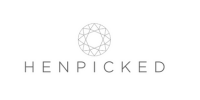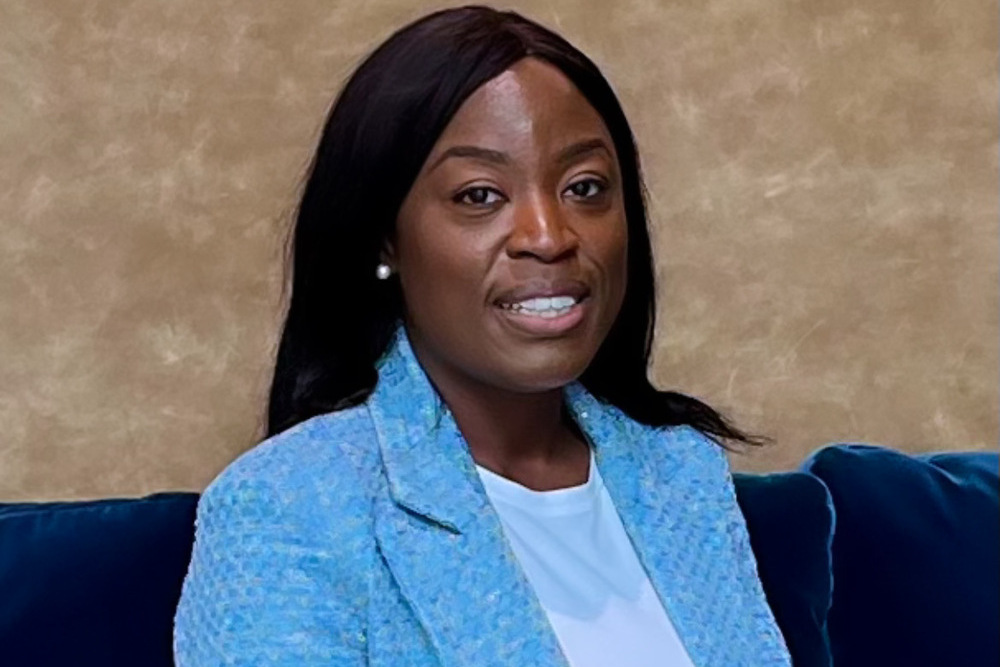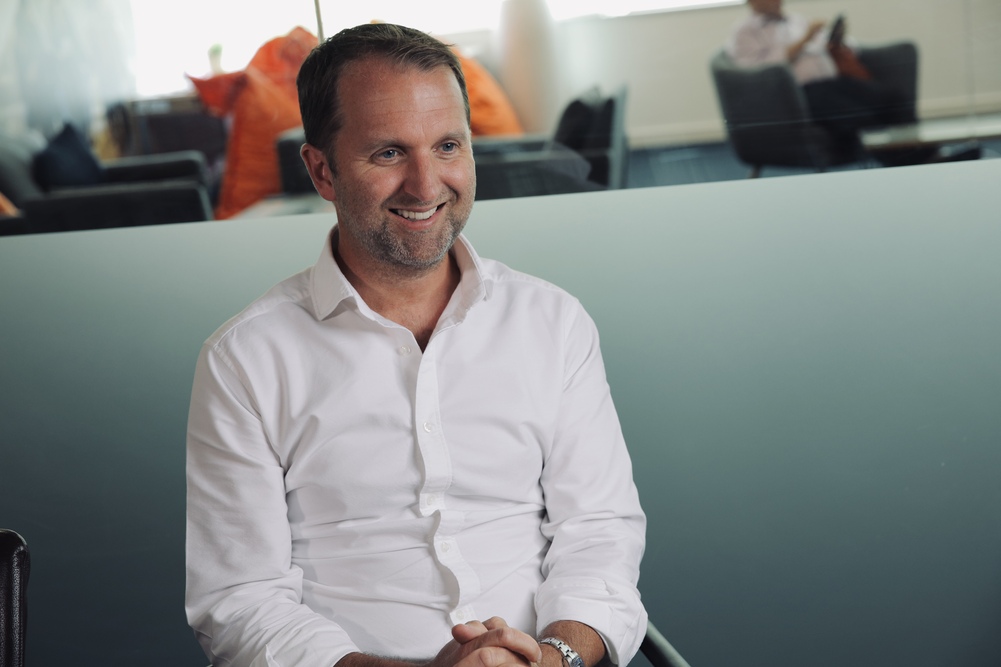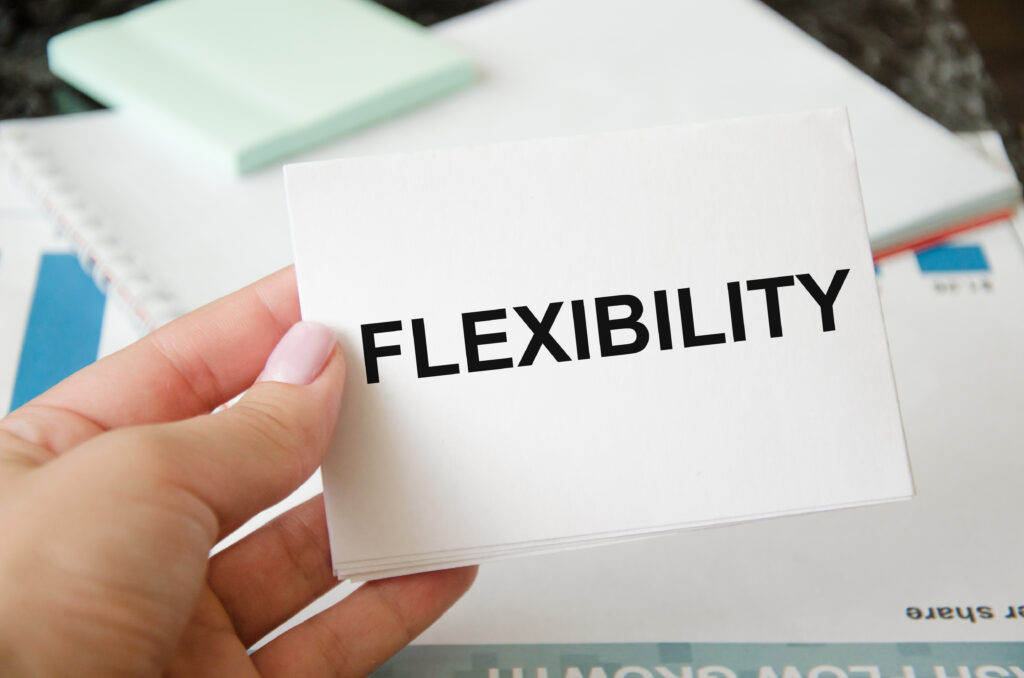Shaping the Future of Work: Wellbeing, Culture & Innovation in the Modern Workplace
The Watercooler Event is a vibrant two-day experience exploring effective ways to create workplaces that empower people to thrive. Join over 6,000 industry experts to exchange ideas, uncover transformative solutions, and celebrate the future of work.
Discover insights from industry leaders on evolving business and people strategies, network with like-minded professionals, and embrace innovative approaches to wellbeing, culture, and productivity.
Meet experts from the following disciplines:
- Wellbeing, Engagement & Mental Health
- HR & Culture
- Diversity, Equality & Inclusion (DE&I)
- Learning & Development
- Employee Benefits
- Occupational Health & Safety
Curating Collaboration with the UK’s Leading Organisations
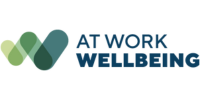


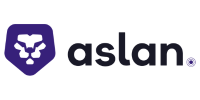

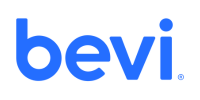













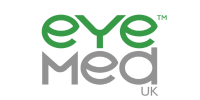
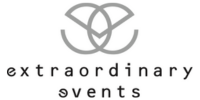


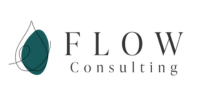
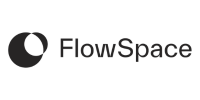








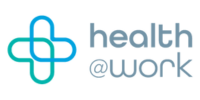










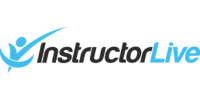



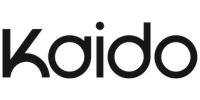





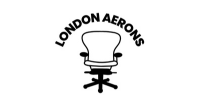






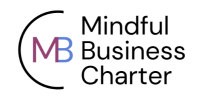





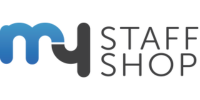




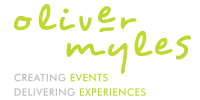

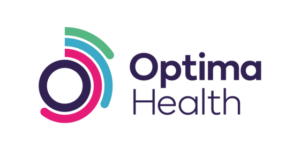




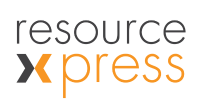

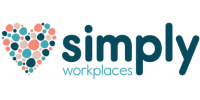
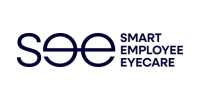




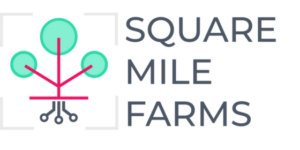



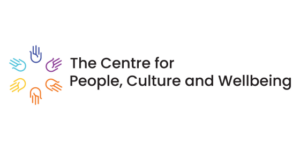











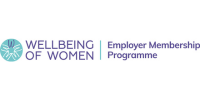




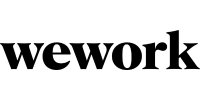
















































































































































































































































AGENDA
Delivering actionable insights to accelerate cultural change.

Speakers
Visionary thinkers from a broad range of business sectors.

Leaders’ Club
The UK’s most innovative leaders.

Exhibitors
Innovative ideas & solutions to build better workplaces.
What’s On
The Watercooler Conference and exhibition content focuses on the key pillars of wellbeing, employee engagement and culture change to enable you to build a comprehensive, strategic approach for a more productive business. As well as a series of focused workshops, the 2025 event featured three parallel tracks running across both days. Now in its fourth year, the conference brings together some of the UK’s brightest and best.

Conference
Three track conferences running side-by-side featuring thought-leading speakers and influencers, it’s held as a ‘silent disco’ format for focused and uninterrupted discussion.

Workshops
Interactive workshop sessions held within the main exhibition hall, featuring deep-dive insight and solution partner case-studies and showcases.
Working Well Beings Podcast
Exploring the Stories of Wellbeing Leaders. This special edition series was recorded LIVE at the Watercooler 2025. Listen here.

Exhibition
The Watercooler exhibition is filled with leading solution partners who are at the forefront of helping businesses deliver workplace culture and wellbeing programmes.

1-2-1 Meetings
Fast-track your supplier and technology partner search via our 1-2-1 meetings programme. Just indicate your interest on the registration form and we’ll do the rest!

The Office
Get the full 360 Workspace and Workplace Experience at the gathering of workplace experts; Workspace Design, FM, Corporate Real Estate, Workplace Strategy and Property.
2025 Speakers

Dame Carol Black GBE

Peter Cheese


Mohammad Koheeallee


Ruth Jackson


Astha Mittal
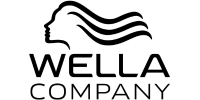

Jason Bloomfield


Carole Smets


Fiona McAslan

Latest Make A Difference News
If you genuinely care about employee Health and Wellbeing, you cannot afford to ignore AI. In an ideal world, employers would be getting themselves educated about its implications and have, or at least be working towards, an AI strategy.
But, as CIPD Chief Peter Cheese says, an AI strategy and policy is not enough on employers’ radars currently which is worrying, as time is running out with so many individuals using it unguided.
If we want to avoid the dystopian future painted in many a sci-fi film about robots taking over the world (this may not be as dramatic as it sounds) then we need to act now and employers are a vital part of that collective action.
Urgency looming
Cheese explains his urgency saying:
“People have said the changes we are seeing today with Generative AI were decades away. But suddenly they’re happening. Now. I’m currently reading a book about transhumanism – who’s to say that is not as far away as we thought? And all these changes have huge ethical implications that are not being considered enough by employers.”
Let’s rewind slightly to a more relatable example, like the use of Copilot to help you with your day to day workload. As Cheese explains, this type of AI is like your personal agent, building up knowledge about your habits, your behaviours, your patterns of work and the questions you’re asking it.
“How do we manage this process and ensure that, whatever our Copilots are learning and coming up with, is going to help us and not fundamentally work against us?” he says.
How do we trust AI?
“And of course – I’m talking about the longstanding concerns of scientists and scifi writers: what happens if these systems become cleverer than us? We need to be asking: how does AI work alongside us and not displace us? How do we trust it? We need to be redesigning jobs and creating new jobs in the age of AI that are good for people.”
When he talks to organisations about AI, he urges them to create a framework and give employees clear guidance on how to use AI responsibly. This means they need to understand how AI works, where biases come from, how you apply judgement to it and how you use the tools transparently.
Doing this avoids a culture of false-productivity and extra pressure where employees pass off AI work as their own, creating a kind of ‘super human’ persona which helps no-one and leads straight to burnout.
Not a tool but a test of leadership
Ultimately, says Louise Aston former Wellbeing Director at Business in the Community and now consultant, “AI isn’t just a tool, it’s a test of leadership; it’s not a tech challenge, it’s a human one”. It concerns her greatly that, so far, the conversation around AI has been obsessed largely with productivity and competitive advantage, seeming to completely miss the seismic impact on employee wellbeing:
“The wellbeing aspect is imperative and should be a priority for business leaders but they seem to be completely overlooking this dimension and, by doing so, I believe they are taking a serious strategic risk.”
The “human side” of the equation is being neglected and must be “embedded” into employers’ AI strategies, she says. The employers that do this will be able to “empower their employees” and unlock higher levels of creativity and work, as well as wellbeing. But to achieve this utopia, “AI and wellbeing must go hand in hand”.
What employees need to know
Building on what Cheese says about what employees need to know in a policy, she adds they need to be clear of what they bring to the role – what she calls “the human factor”.
For her, the key “differentiator” of humans over robots in the workplace is that robots can’t “drive culture”. Why not? Because, she says, they can’t create psychological safety; the cornerstone of health and wellbeing at work:
“Culture is about people. It’s about human beings. It’s about purpose. It’s about trust. AI cannot do these things. That is really, really key. I can’t stress that enough.”
Short-term gains, long-term pains
She concedes that yes, in the short-term, using AI surreptitiously alongside your work in an unguided way may lead to improved personal productivity. But in the longterm this strategy is on a hiding to nothing because humans are “feeling” creatures who want a sense of purpose and motivation.
“Besides, I think the quality of work in this kind of future will just be really, incredibly boring,” she says; and this is a woman who knows what she is talking about on the psychology and cultivation of creativity and original thought, having formerly been Creative Director of the UK government’s inhouse marketing agency, the Central Office of Information (COI).
DEI gaps
Outgoing Global Head of Inclusion at a FTSE listed British multinational FMCG company, Tolulope Oke, has just come back from an event about ‘unlocking opportunities for the Black and Global Majority Community through Ethical AI’ when I speak to her. She is keen that AI is guided to close DEI gaps, like the disability gap and the employment gap, rather than widen them through embedded biases.
AI consultancy is a key pillar of her new company, The Inclusive Experience Group, because she’s seen first hand, having worked at big brands like Diageo, Amazon and Sainsbury’s, the need for governance in this area. And she doesn’t believe that companies should rely on governments for this guidance as, with so many things, they are struggling to keep up with the pace of change:
“We don’t have a lot of global, regional or national standards on AI. There’s still a lot of gaps in regulation. And there’s not a lot in the UK specifically, and the UK actually refused to adopt a policy which would have given greater protections to people around AI and so we are still waiting to see what happens in terms of more regulation.”
Government lagging
Due to this governmental lag, it makes sense that employers – given the urgency already explained – create their own governance. But, like Cheese and Aston, Oke is worried that employers are missing vital considerations:
“We have to be really careful around governance and a lot of organisations have rushed, especially in the last 18 months, because they have had to adopt their own internal systems due to the fact their employees are already using open-source AI and putting confidential data out into the market.”
So what are they missing?
We’ve already discussed the “human factor”, mentioned by Aston, but Oke says another major ‘miss’ is the social impact on marginalised, vulnerable communities in the Global South. She’s concerned that if not managed well, AI being used by the West could exacerbate inequality, gaps like those in literacy and job displacement, which raises serious ethical concerns for her – especially at a time of ‘ESG’ when companies are supposed to be considering their social impact.
“Yes we may be forging ahead in the West but are some people being left behind? We need equality of education and understanding,” she says. “AI may look sexy and shiny in the Western world but the economic impact in the Global South cannot be underestimated.”
Massive environmental impact
The lack of focus on the “absolutely massive” environmental impact of AI, due to the huge data centres necessary to process all the data, also disturbs her. She expects to see a “shift in the ESG index” as companies grapple with uplifted carbon footprints as a result. The problem is, she says, the data scientists and experts involved with programming and creating AI aren’t talking about these challenges.
“They’ll talk to you in acronyms and tech jargon but not about the social impacts and the environment because that’s not their remit or their personal concern,” says Oke. “That’s why people in roles like mine are so important because we look at the bigger picture.”
People that work in Health and Wellbeing and DEI are often driven by a mission to look at the cost of productivity, not only on employee wellbeing, but also the planet’s.
As Oke says, she “always adds [her] actual, real world, diverse, inclusive experience and critical thinking to help interpret any data”.
As she says, for now, “AI can’t do that. AI can’t think the way I think, and that’s what gives me the value add.”
But, as the CIPD’s Cheese said at the start of this article, the important words are “for now”.
As we also said at the beginning, if you genuinely care about employee health and wellbeing, you cannot afford to ignore AI. The question is: are you?
You may also like:
AI can crush Culture and Wellbeing: how do you ensure it doesn’t?
In recent months, many organisations have found themselves in the crossfire of a growing backlash against Diversity, Equity and Inclusion (DEI) programmes. While the conversation has become polarised, and the current climate is undeniably challenging, this also brings an opportunity to pause, reassess, and to look at how to do things differently. It creates a space to reflect on what hasn’t been working, and what needs to change.
The truth about the DEI backlash
Too often, DEI has been implemented as a tick-box exercise: driven by quotas, focused on isolated initiatives like ERGs, and evaluated through engagement metrics. While these efforts have raised awareness, these efforts have often failed to move the needle on true inclusion or business performance. As a result, many DEI budgets have come under scrutiny—particularly when organisations struggle to see a link between inclusion and productivity.
Worse still, DEI has sometimes become detached from the core functions of the organisation – driven by engagement surveys rather than tied into business outcomes such as performance, productivity, or development. When budgets tighten, the programmes that aren’t seen as delivering measurable value are the first to be cut.
Driving inclusion through performance, not programmes
So, what’s the alternative?
It’s time to move the DEI conversation out of the “HR silo” and into the heart of organisational performance. Rather than asking if people feel included, we should be asking: How does inclusion enable our people to perform at their best?”
Embedding DEI into the fabric of the organisation means moving beyond surface-level initiatives and aligning inclusion efforts with core business drivers: performance, wellbeing, and leadership capability. This is where real cultural change begins; not with top-down mandates, but with consistent behaviours that ripple through teams, systems, and decision-making.
When inclusion becomes part of how a business operates,not just what it says, it naturally supports wellbeing, boosts productivity, and drives retention.
Change happens through habit, not one-off intervention
Change doesn’t happen through a one-off intervention. It happens through habit. That means equipping leaders not just to talk about inclusion, but to model it. It means making inclusive decision-making part of everyday practice, not an annual training module.
This means designing inclusion strategies that are measured not just through engagement scores, but through metrics like productivity, retention, and development. It means HR working hand-in-hand with leadership to ensure DEI or culture is linked to business strategy, not bolted on as an afterthought.
This behavioural approach to culture change has clear benefits. Rather than siloing DEI, we can integrate it with employee performance, leadership development, and organisational health. The result? A culture where people don’t just feel safe, they feel empowered to contribute and thrive.
A moment of opportunity
I understand the discomfort around the current backlash but it’s also a signal that surface-level efforts are no longer enough. I also believe this is a moment of possibility. Organisations need a different approach, one that embeds inclusion into the daily fabric of how they work, lead, and grow.
Let’s not stop talking about difference. Let’s start doing difference differently.
About the author
Johanna was formerly Group HR Director at Oxford University Press, she is now one of the few female CEOs in the data and technology industry and has this year been shortlisted for GBEA Tech Founder of the Year.
She launched FabricShift (previously In Diverse Company) in 2019 out of a strong belief that there was a better way to create and measure inclusive cultures, ones that drive business performance, innovation and productivity. FabricShift focuses on helping leaders create inclusive cultures and understand that differences enhance decision-making and improve company performance.
You might also like:
Beyond the backlash: drive culture change through performance, not quotas
We’ve all heard the cliches that “men don’t talk about their feelings” and only want to chat football. But there’s a reason these tropes persist: they contain truths that workplaces often ignore.
Emily Pearson, Founder of Wellbeing Lead Academy and the Manbassador programme, says many organisations still don’t understand how differently men communicate, especially when it comes to health.
“It’s so different,” she says. “Put two women in a room who’ve never met each other and in ten minutes we’ll be talking about everything from periods to the menopause to our plan for the next five years. Men don’t do that.”
Workplaces largely haven’t created spaces for men, as much as they have women, to speak up in a way that feels comfortable for them about their health and wellbeing. The far fewer number of male networks is evidence of this.
“‘Come along, sit and talk about your feelings’ is probably not going to get men engaged in a health based conversation,” says Pearson.
So what is? This article gives you 8 ideas for inspiration…
1. Understand male psychology better
There are evolutionary reasons that men and women are different, and have different attitudes and preferences when it comes to communications and thinking about their health and wellbeing. But the fact there is currently only one module in the UK which covers male psychology – and that’s at Sunderland University – is more evidence we don’t really understand the important nuances, says Pearson.
“Men build relationships in a different way. It’s around camaraderie, teamwork, a bit of healthy competition and by standing shoulder to shoulder,” she says.
“If you put a five a side football match over lunchtime and have a bit of competition between the guys in finance and the guys on the shop floor, they’ll probably turn up. Then you can embed and introduce conversations and information about health and wellbeing, once the engagement happens.”
2. Critically assess your health policy: do you understand your men? Really?
“I find a lot of employer health policy is written by middle class people in nice middle class, warm offices and they don’t really understand how the policy supports employees especially the likes of blue collar men doing blue collar roles,” says Mark Brooks, who is working with the government on its forthcoming Men’s Health Strategy (more on this later).
Matt Grisedale, Senior People Champion, E.ON, was very conscious of this, setting up a men’s network because the five people who originally set up the group were all white, middle-aged men.
“We were all coming from the same space so I knew we had to bring in some new perspectives,” he says. “So I reached out to people I knew across the business, people with very different perspectives to ours. We were conscious of not just creating a space that was going to work for middle-aged white men because that’s what we are.”
3. Recognise building trust takes longer
Often men will disclose about their mental health and wellbeing just to a trusted female partner, whereas women generally have a lot of female friends and talk to them.
“Again this is evolutionary, it’s biology and psychology,” says. It means that workplaces need to expect the process of getting the conversation going to take longer.
4. Don’t force men to talk about their feelings (especially to therapists)
Sometimes rather than a therapist or a counsellor, men would prefer to speak to a peer, which is why peer mentor programmes like Manbassadors are seeing such success (see Active Leeds case study here).
Also, the positive influence isn’t necessarily about talking – role models can inspire others just by modelling healthy behaviour.
“Having Bobby in your in your organisation, who’s being a positive male role model is just as powerful as some amazing footballer who’s on million pound a month salary,” says Pearson.
5. Let conversations happen naturally
“Our most powerful sessions happen when we simply say, ‘what do you want to talk about?’” says Grisedale. “That openness leads to real lightbulb moments.”
“Men are more likely to want to problem solve their issues, rather than just ‘talk’ about their feelings,” says Pearson.
“Men want to find ways forward. So often the best way to communicate with them is through coaching around goal setting and finding solutions to problems. It’s a different way of supporting.”
6. Consider using ‘banter’ for men in health messages
Many men say they appreciate humour being brought into communications, especially around tough topics.
Take cancer, for example. Grisedale says that one of the approaches that engaged male employees recently in a podcast on testicular cancer was the fact the interviewees “made it fun and talked about some of the silly nicknames they’d be given by their friends and family, because that’s how men like to interact”.
As Grisedale rightly says, getting this balance right has become tricky in light of the ‘toxic masculinity’ tag now automatically attached to some male behaviour, with ‘banter’ often being brandished with one brush as ‘all bad’. However, as he says:
“Sometimes that kind of banter can be seen as toxic masculinity but often that isn’t what it is, often it’s just a different way of dealing with difficult stuff.”
7. Offer anonymous resources
“There’s a lot of demonisation about the online world, but men will tend to look for help themselves, especially about a sensitive topic, which is why anonymous helplines are good,” says Brooks.
That’s why, too, employers shouldn’t underestimate the value of rich online information and signposting.
“These are often a gateway for men to seeking help and validation,” says Brooks. “Men may not want to talk at work but if they suddenly start turning up to a Andy’s Man Club or Men’s Shed because they found the link on your website, you’ve done your job as an employer.”
8. Support the Men’s Health Strategy
A government-backed Men’s Health Strategy is in the works. It aims to get more men into the health system—and into work—by tackling health barriers.
Employers can feed into the government’s call for evidence, open now.
Information about what health strategies have succeeded and why, as well as the barriers which had to be overcome, is useful to help inform policy.
According to Brooks, the government is “100%” committed to seeing this strategy through:
“This isn’t something that’s been handed down to a junior minister to take charge off, it comes right from the top. The government has got ambitious targets to have employability rates of 80%. To do that, though, you need a male employability rate of 83% because the rate needs to be higher for men than women. That means we need a million more men in work than we currently have and the biggest barrier for them is ill health.”
You might also like:
8 Ways to engage Men with Health & Wellbeing at work
Over a third (35%) of women put off their cervical screenings due to work commitments, and half say they feel pressured to prioritise work over personal health appointments, according to new research from the Lady Garden Foundation.
On the back of the worrying findings, the gynaecological cancer charity is calling for employers to provide additional paid leave for cervical screenings.
The research is particularly concerning given the already well-documented, and growing, “wellbeing gap” between men and women in the workplace: only 54% of women rate their workplace wellbeing as “good”, compared to 63% of men, according to the latest ‘What Employees Want: Workplace Wellbeing Trends in 2025” from YouGov and Yulife.
Paid leave for screenings
Jenny Halpern Prince MBE, Chief Executive Officer and Co-Founder of the Lady Garden Foundation, said:
“Employers have a huge role to play in enabling women to have the time off they need, whilst also normalising the conversation in the workplace. This is evident in the fact that our research told us 60% of women believed more open workplace conversations would encourage them to attend.”
The research also reveals that:
- nearly a third (31%) of women have booked annual leave to attend their cervical screenings, with 16% saying their boss or workplace had demanded they do so
- nearly a third (31%) also claimed that their boss or workplace would not see their cervical screening as a good reason to be off work
- 48% agree that companies employers should give paid time off to attend screenings
- more than three-quarters (77%) believe women should have a legal right to do this
- more than half (58%) say they were unaware of any policies or programmes in their workplace to support women to take time off to attend their cervical screening
- 84% say that having the ability to work from home offers them more flexibility to attend medical appointments, including cervical screenings
- nearly a third (31%) say they struggle to get an appointment at a convenient time of day
To help employers support women better in the workplace, the Lady Garden Foundation has created two guides, one for employers and one for employees. These can be downloaded from the Lady Garden Foundation website.
5m behind with screenings
The research was commissioned ahead of Cervical Screening Awareness Week which has just finished (19th – 25th June).
NHS England estimates that five million women currently aren’t up to date with their cervical screenings, potentially putting their lives at risk.
Cervical cancer is most commonly diagnosed in women between 30-34 years old but it can occur at any age, with early detection being key. In 2023-24, 5.12 million women in England aged between 25-64 were due a cervical cancer screening, however only 3.25 million women were tested – a concerning number given that 99.8% of cases are preventable if women regularly attend their screenings and are HPV vaccinated.
You might also like:
Over a third of women delay cervical screens due to work commitments and pressure, study finds
Employers have four more days (30 June) to submit their response to the UK government’s consultation on introducing mandatory ethnicity and disability pay gap reporting.
This new requirement will affect UK employers with 250 staff or more and the proposals are designed to reduce workplace inequalities and foster employee wellbeing through transparency.
Employers can submit a formal response by 30th June, suggesting their opinions on what would work best in terms of data collection, reporting thresholds and actions.
Affect the forthcoming Equality Bill
These responses will be used to inform the government’s drafting of the proposed Equality (Race and Disability) Bill and ensure that the legislation gives employers a clear framework regarding what is required of them.
Some organisations have already publicly responded to the consultation, such as Action for Race Equality (ARE) which has urged the government to take a strong stance which goes beyond simply collecting data and includes narratives as well as action plans. It is also proposing that public bodies like the NHS are included, and that organisations are fined for non compliance.
First step to tackle inequality
A spokesperson said:
“EPG Reporting is the first step for tackling inequality because it measures the scale of racial disparities and institutional racism.”
Meanwhile the Race on the Stats Society is calling for pay disparities to be revealed at all levels but warns against “league table” style comparisons favouring flexible reporting.
Business in the Community (BITC) welcomes the consultation but also points out that 50% of large UK firms already collect ethnicity data and it urges the government to learn from insights gained from gender pay gap reporting – especially around transparency and accountability.
Lack of representation in senior roles
Richard Iferenta, Partner and Vice Chair at KPMG LLP and Chair of BITC’s Race Leadership Team, said:
“One in five working age adults in the UK come from a Black, Asian, Mixed Race, or other ethnically diverse background, yet a far smaller proportion of ethnically diverse employees are in senior management roles. I believe that making ethnicity pay gap reporting mandatory is vital, but so are business action plans to address the pay gaps that are highlighted during this process. It is also essential that we close the ethnicity pay gap and support more people from Black, Asian, Mixed Race, or other ethnically diverse backgrounds into more senior roles. The Bill is a welcome step and I look forward to seeing it progress.”
Possible steps for employers wanting to get a headstart on implementing this reporting could review responses for best practice, pilot different approaches, engage staff in their own consultations and start crafting narratives and action plans.
Closing date looms for consultation on mandatory ethnicity and disability pay gap
Diageo’s outgoing Head of Inclusion & Diversity, Tolulope Oke, believes that DEI should be a vehicle for “business enablement and cultural transformation”, which is why she is, this month, launching a consultancy specialising in this.
While some professionals are shying away from even using the words “diversity” or “inclusion” Oke is intent in showing businesses they are even more important than ever, especially when it comes to an employer’s bottom line and, especially, in the age of AI.
As she says in this interview, she has seen various backlashes towards DEI over her career – which has spanned stints at not only Diageo but Amazon and Sainsbury’s – and isn’t phased by this one.
We spoke to her to find out more.
How has your role in DEI evolved?
When I first started, it was ‘side of desk’ work, purely outreach and engagement for the purposes of talent acquisition.
Then we started to look inward, looking at if people join our organisation, what can we do to keep them here and engaged.
Are you worried by the current DEI backlash?
I’ve been doing DEI work now almost 15 years, working in it during #metoo, Black Lives Matter, Brexit and Covid, so I have, perhaps, a different response to the current DEI backlash compared to practitioners who haven’t been practicing as long.
I’ve been through pushbacks before and we’ve always continued to weather the storm. I can say with some level of assuredness that DEI work isn’t going away. Though it might change in what we call it. It might pause, for a bit.
But, ultimately we know that this work makes sense, from a talent attraction perspective and from an experiential perspective, let alone from a commercial perspective, which has been my focus over the last six years when I’ve been honing my craft.
What skills are necessary for DEI professionals to ‘weather’ these storms?
We don’t always have the practitioners who have the dynamic skill set necessary.
To be a practitioner in this space, it takes more than passion and more than your lived experience. In fact, lived experience can become a trauma response to work and that is not helpful. And, I think, that’s what’s happened in many cases and that’s why we’ve got this backlash.
While this work started off about inclusion for all, it became very specific and centred. Most people would say that we need to bring other voices back in the conversation.
Having said that, I would say there’s always been a contingent of practitioners (and I would include myself) who have always done this work centring on all, and focusing not on ‘either or’ but ‘both’.
But there was also backlash around people saying ‘all lives matter’ during the Black Lives Matter campaign. Can you tell me your thoughts on that?
Yes. When BLM was being talked about, saying ‘all lives matter’ was being used to silence and drown out a very specific conversation. That was about co-opting a conversation.
‘What about all lives?’ is a valid question but – at that present moment – we were having a particular conversation. Context really matters. What this question was doing was changing the conversation.
Language seems to be really tricky in DEI…
DEI is both an art and a science. Like if you’re a writer writing about politics, there’s a way in which you can write about a broad spectrum of political views without endorsing one or silencing another. It’s that constant art of juggling.
You’re also an AI expert and been looking at AI in regard to cultural change. What gets you excited about what AI can do in terms of positive culture change?
Using AI to do things like help people who’ve come back from family leave, or other types of leave, and don’t know where to start. Platforms like Copilot, for example, help you synthesise your inbox and pull out the key threads and actions from your emails.
We actually did a trial on this, supporting employees with ADHD / autism when they came back from family leave.
We’ve also used AI to test out Copilot for those experiencing the menopause, and symptoms like brain fog, so they feel more productive and supported. Another example is using AI to sift through CVs and sorting through payroll data.
From a DEI perspective, I would love to see more great innovations using AI to close gaps, like the disability working gap and the employment gap.
What worries you about AI?
I think we need to be very careful around governance and many organisations have rushed into using AI and their employees are using open-source AI putting confidential data into the market.
What’s your advice to others responsible for AI?
You need to create your own internal AI because the reality is that people will be using AI regardless. This is costly, but I don’t think there’s a way around it.
Also, employees need to learn to be AI-enabled in their roles for employers to maximise productivity. Employers need to develop inhouse systems and create good governance around these.
How impactful do you think AI will be in the workplace?
It’s one of the biggest shifts we’ve ever seen in culture in the world. We can’t bury our heads in the sand. I’d compare it to the transition from the horse, to the cart to the car. From the candlestick to electricity. AI is going to be that transformative.
And if used for good, it can do some incredible things, that serve great social causes and needs. But this cannot be done in isolation, without understanding the impact – quite often detrimental – of AI on certain groups, especially those in the global south.
Right now, AI is very much a ‘good news’ story with businesses talking about what it’s enabling them to do and, in the Western world, we’re forging ahead with it – fast. But people are being left behind. So we also need to have an equity of education and understanding, too.
You have a strong faith and are a spiritual person, which you talk about openly on your LinkedIn. Do you feel this comes into play when you think about AI?
Yes. That’s the reason I do this work. If not, I’d probably be in something like sales, and get paid more!
I have an altruistic view of the world. I believe that we have been given this world to steward and to be our brother’s keeper, quite literally. That means I want to show up and make this world better. So yes, my faith helps me to stay grounded in this world and gives me a real sense of responsibility to others.
You might also like:
DEI: ‘I’ve been through pushbacks before & we’ve always weathered the storm; this work makes sense’
Topics such as DEI and sustainability have dominated headlines in the last six months, largely due to what’s happening across the pond with the recent US administration dismantling federal programmes and corporates visibility rolling back on these policies.
June seems like an appropriate time to re-examine the current state of play concerning sustainability in the UK, given the amount of environmental themed awareness days that fall this month – such as World Environment Day (5th), World Oceans Day (8th) and World Rainforest Day (22nd), to mention just a few.
So, how aware are employees of sustainability, what are their attitudes towards it and how are they expecting their employers to deliver on these initiatives?
Most employees want efforts stepped up
The fact remains that businesses need to back up their sustainability claims and plans – especially if Britain’s businesses hope to retain their brightest talent.
According to our research, half (51%) of employees want their employer to step up efforts and invest more in sustainability, this figure rises to 61% for younger workers aged 18-34. Worryingly, a third (33%) of this age group also believe that their employers simply do not care about the issue.
When thinking about sustainability, many leaders are likely to immediately shift their focus on mitigating scope 1 and 2 emissions. Yet a key area that is often overlooked by businesses is their benefits packages. And the demand from employees to offer environmentally friendly perks is clearly there.
Benefits packages often overlooked
Over half (53%) of UK employees would like to see their company investing in more sustainable benefits – this number rises to 66% for 18-34 year olds. This shift is not going unnoticed by employers – more than four in ten (44%) businesses report an increase in the number of employees asking for sustainable benefits such as electric vehicle schemes or sustainable pension funds.
Considering employee benefits more broadly, offering a targeted and effective rewards package is essential in modern workplaces – it is also vital to attracting and retaining top talent.
Our latest piece of research, published earlier in the year finds that half (52%) of employees say a good benefits package is the most important thing they look for in employment, rising to two thirds (66%) of those aged 18-34. The fact is, if a business doesn’t successfully deliver on its benefits package another employer will – impacting an organisation’s productivity, talent retention and competitiveness.
Next gen care about sustainability deeply
With the next generation increasingly populating the UK’s workforce, many of whom are both more concerned about their benefits packages and naturally more engaged in sustainability initiatives to safeguard their future, businesses need to demonstrate that they are clearly committed to sustainability, ethical and environmentally friendly practices in more ways than one.
While more ‘traditional’ ways of thinking about sustainability shouldn’t be disregarded, such as efficient operation management and transparent ESG reporting, leaders should also consider the ways they can align with their employees’ values on a more personal level.
Align with employee values on a personal level
Integrating innovative employee benefits technology can help businesses enable more targeted and flexible benefits – including more sustainable options.
Using data and insights derived from benefits platforms like Zest, means employers can also send targeted communications to employees to accommodate changing demands while ensuring that the right benefits reach the right employees at the right time.
Not only will offering personalised and sustainable benefits mean businesses can better meet the demands of their employees, boosting their ability to attract and retain talent, but perhaps more crucially, it will support the UK’s broader journey to net zero.
About the author
Matt Russell was appointed CEO of benefits technology platform Zest in 2023. He has over 20 years of experience in the HR and benefits sectors, previously held senior positions at HR-software business, CIPHR, and benefits platform provider, Benefex.
Zest provides flexible benefits services for a wide range of well-known businesses across the world, including Hargreaves Lansdown, Taylor Wimpey, ADP and Travis Perkins.
You might also like:
Sustainable employee benefits; an underused way to deliver on environmental commitments
There’s a crisis in masculinity. Workplaces need to start talking about that and taking responsibility for that.
These are the words of historian and social commentator Dr Eliza Filby speaking at the Watercooler, in a captivating session on understanding and supporting multigenerational workforces. (If you missed her, we’ve invited her to speak at our MAD Summit on 9 October, 2025).
Dr Filby is not alone in her view. There’s a groundswell of opinion, as well as research, that it’s actually males who are lagging behind females in many areas of life now, particularly work.
More girls are going into higher education today than boys, with females making up 58% of domestic undergraduate student intake in the UK in 2021-22. By this year too – 2022 – research showed for the first time that the average income for young women exceeded their male counterparts.
‘Powerless men’
It’s already well known that three times more men than women die by suicide, but this gap has also widened in the last few years; the male suicide rate in England and Wales hit 17.4 per 100,000 in 2023, marking a record high since 1995 (ref. ONS).
These turnaround trends have prompted mainstream media such as The Times to write headlines like ‘The divide in tomorrow’s Britain: power women and powerless men’ (8th June). They’ve also led to fiercely feminist thought leaders worrying about the plight of men, and the overall effect on gender equality, with journalist Caitlin Moran even writing a book entitled: ‘What about men?’
Moran believes that modern definitions of masculinity have become too constraining and are causing this downturn in male wellbeing and confidence, and that a male equivalent of a feminist revolution is needed.
Do men need a feminist revolution?
Speaking on the To Be A Boy podcast recently she said:
“Women rebelled against this whole idea of being the perfect woman with the perfect body and earning your money and having the perfect domestic life. But men and boys don’t have that language yet. Men have not had anything equivalent to feminism, so they have no tools in their toolbox to counter these ideas [of modern masculinity].”
The question for you, working in Health and Wellbeing, reading this is: is it an employer’s responsibility to step in here and help give them these tools?
For Matt Grisedale, Senior People Champion, E.ON, a “crisis” of masculinity is “probably a bit dramatic” but he agrees that “what has traditionally been seen as masculine traits are changing and people need to understand that masculinity is different today”.
Lack of role models
In his experience, men have suffered from a lack of role models because there’s far less written and talked about modern masculinity, compared to shared experiences of being a woman:
“I’d love to write a book about this at some point because there’s such a lack. I think it’s important to get people together to share experiences. Even if that’s just a list of what they’ve done, or quotes from different men that stand out and help people think differently because not all men are the same.”
Grisedale has started bringing groups of men together informally at E.ON. One of the biggest learnings he’s had is that the issues that men are grappling with are actually very similar across the generations:
“I thought they would be very different, depending on age group. But they’re not. The problematic feelings are often the same… it’s imposter feelings… or feelings of not being good enough… or pressure to be different, or behave differently.”
Spaces for men needed
Emily Pearson, who is behind the Manbassador programme and is founder of the Wellbeing Lead Academy believes Grisedale is 100% right to focus on creating spaces for men to be themselves. For her, the crisis is the lack of “spaces that support men to live healthier, engaged lives” and to feel understood.
She agrees that “there’s real urgency” to tackle this issue, not least because it’s become commonplace now for society to “blame men and their masculinity for all of their problems, including their health problems”. The fact that the word “toxic” is almost automatically invisibly applied to the word “masculinity” in 2025 could serve as compelling evidence of her point.
However, she also wouldn’t say that “masculinity itself is in crisis”, rather that “many men are facing challenges around identity, connection and wellbeing that aren’t being openly acknowledged in society and most workplaces”.
DEI backlash
Even worse than not being openly acknowledged, some men report that some workplaces have made them feel that talking about their experiences is not welcome, or even appropriate. It could be argued that some men’s sense of alienation has led, at least in part, to the current DEI backlash in some workplaces, triggered by President Trump but embraced by numerous employers after him.
There’s certainly evidence that men have been feeling silenced, or even alienated, at work. For instance, research has found that:
- some men feel unsure of their role, and where they belong in an organisation, as a result of DEI efforts (ref. 2023 report by Catalyst)
- others feel hesitant to access resources, like mental health resources, for fear of appearing weak or ungrateful (ref Deloitte report on workplace wellbeing)
- and many men, especially white men, report feeling uneasy about discussing their challenges at work (ref Women in the Workplace report by McKinsey).
“Workplaces have expected men to be allies of women, and rightly so,” he says. “But who are the allies for men? Some of the DEI pushback, I think, has been that the conversation has not included men as being people that need DEI support,” says Mark Brooks, Senior Communications and Policy Adviser to the government on Men’s Health, Inclusion and Domestic Abuse.
Business case for embracing difference
This is not for one minute to suggest that DEI initiatives are not important and necessary for an entire workforce to thrive; we have written many, many articles here on the business case for embracing difference at work, in all its guises, and why it’s so valuable – now more than ever.
But all employees, whatever background and characteristics, must feel included in the DEI conversation for wellbeing strategies to be effective.
Pearson has heard about this sense of being silenced and criticised, too, from the men she’s worked with:
“A lot of them feel as if they’re being man-bashed and targeted. The fact that people talk openly about ‘white male and stale’ employees in the workplace is absolutely horrendous.”
Have we disengaged men?
In some environments, it’s even become socially acceptable to vilify men and make them feel bad about showing, or priding themselves, on any masculine traits. So they hide them, repress them or find role models that see the good in them (hello, Andrew Tate).
In this context, it’s understandable to see why we’ve got to where we’ve got: because many men don’t feel understood, able to speak up or valued, they are disengaging and disconnecting. And, as Pearson, warns, this is dangerous for their wellbeing because “connection is protective against lots of men’s health issues like suicide, addiction and isolation”.
So what’s the good news, you might ask? I thought you at Make A Difference focused on that? The positive and proactive?
Yes, we absolutely do.
The positives
The positive – as Brooks says – is that male health is now firmly on the agenda alongside female health.
“Over the last 10 years there has been a gradual recognition that there is a need for, not only public policy around men’s health, but also professional practice,” he says.
“So that means services provided directly by the health system, or by those working in and around it, like the Manbassador programme or other employer programmes.”
As other positives, he also cites the fact that there’s been a marked increase in charities campaigning around men’s mental and physical health, and a recognition that men’s health needs to be embedded into other initiatives like employment strategies and boys’ education.
But the major positive, says Brooks, is the forthcoming men’s health strategy, announced in November and currently in the ‘call for evidence’ part of the process. He’s part of the team advising the government.
He says:
“We’ve got a Women’s Health Strategy now and, building on that, there will be a Men’s Health Strategy as well, which is complementary because, after all, men and women do not lead separate lives. We, and our health, are very much interlinked.”
You might also like:
Is it time for a Spice Boys revolution? And if so, should employers get involved?
In just a couple of weeks — on Wednesday 2nd July — we’re hosting a Make A Difference webinar exploring how employers can use flexible rentals to redefine the modern workplace. This conversation goes beyond cost-cutting — it’s also about meeting the growing demand for personalisation, autonomy, and adaptability in modern work environments.
That’s why new research from International Workplace Group (IWG) caught my attention. It reveals that 9 in 10 CEOs and CFOs (90%) are concerned about the impact of macroeconomic instability — and many are turning to hybrid working models as a strategy to boost resilience and reduce costs.
Hybrid working as a strategic response to uncertainty
The findings echo the trends we’re seeing in the lead-up to our webinar. According to IWG’s report, four in five executives (81%) say hybrid work is now a key part of their cost-saving strategies, helping buffer their organisations against today’s economic turbulence.
Thanks to the flexibility hybrid working offers, leaders report they’ve been able to significantly cut overheads — from office space to utilities. In fact, 77% say these savings have allowed them to reinvest in other areas or create a financial cushion for uncertain times.
Expanding horizons while boosting productivity
But hybrid working isn’t just about saving money. 74% of CEOs and CFOs say it has enabled them to explore new business locations, creating greater agility and growth potential.
And the people-focused benefits are hard to ignore:
- 82% report improved employee productivity
- 79% are exploring more flexible workspaces to strengthen resilience during economic uncertainty
People still come first
While 63% of leaders are reducing operating costs, they remain focused on their most important asset: their people.
When asked about top priorities during tough times, executives cited:
- Productivity (37%)
- Employee wellbeing (24%)
- Long-term talent retention (17%)
As part of this focus on talent, 88% of business leaders say hybrid working boosts employee satisfaction — making it a strategic priority for future recruitment and retention.
Not everyone has cracked the hybrid code
That said, hybrid working isn’t without its challenges. Not all employers are sold on the model, and many are still struggling to make it work for everyone. In fact, several members of our Make A Difference Leaders’ Club have cited what one described as “the hybrid disengage” as a top concern — highlighting the importance of getting the implementation right.
The CEO view: Flexibility fuels growth
Mark Dixon, CEO and Founder of IWG, puts it succinctly:
“In times of economic volatility, CEOs are carefully evaluating how to navigate uncertainty while driving efficiency and growth. They recognise that flexibility is not only crucial when it comes to safeguarding their operations, but also enhancing the productivity of their teams.
By empowering their teams to work closer to home in local workspaces and offices, companies operating in the hybrid model are able to significantly reduce their costs and improve the work-life balance of their people.”
Find out more
You can view International Workplace Group’s full report [here].
And don’t forget to register for our free Make A Difference webinar, sponsored by Fluid Furniture:
“Flex on demand: how flexible rentals are reshaping the future of work”
?️ Wednesday 2nd July, 10.00am – 11.00am
? [Register here].
You might also like:



